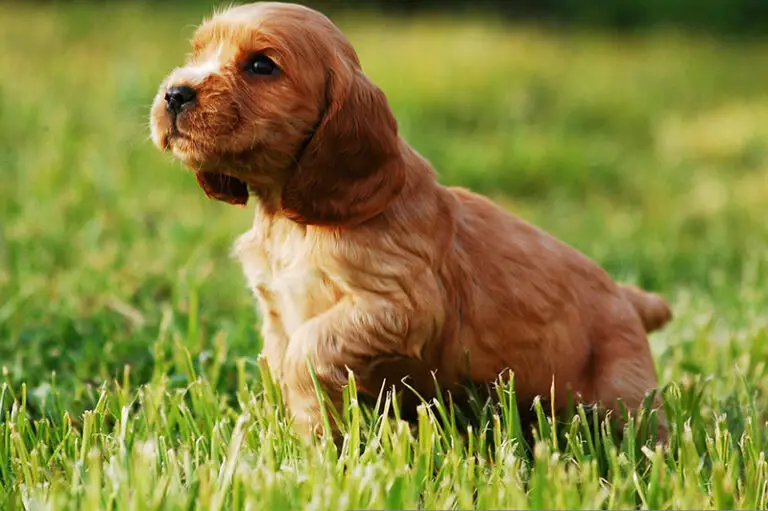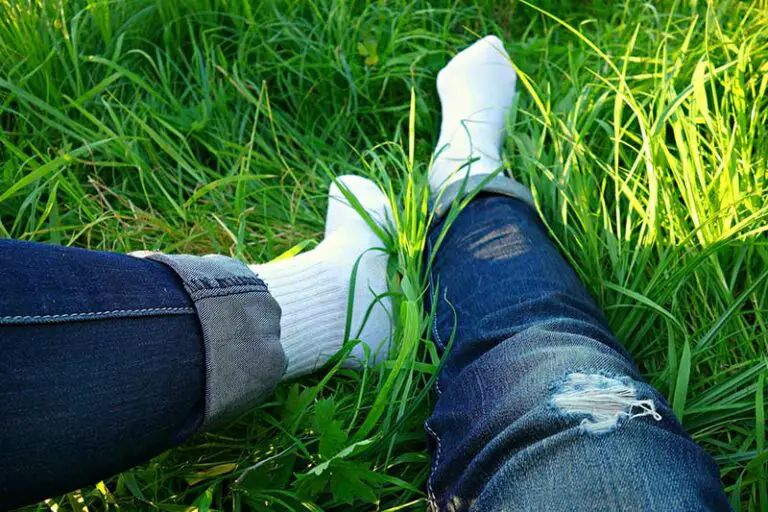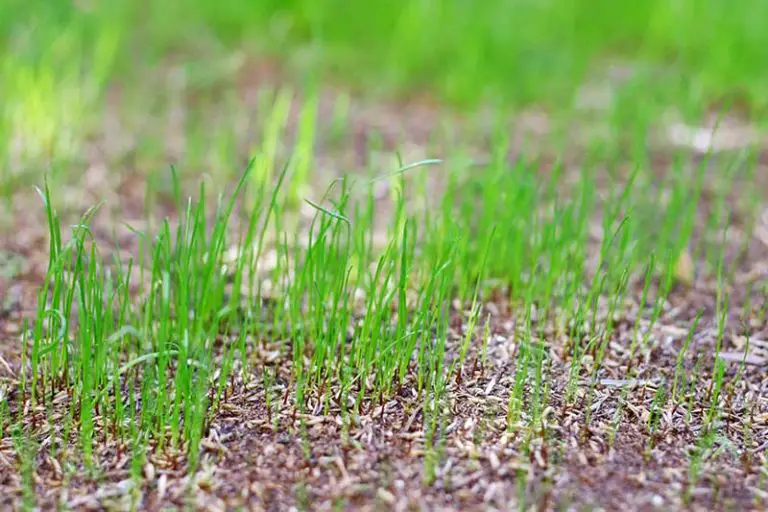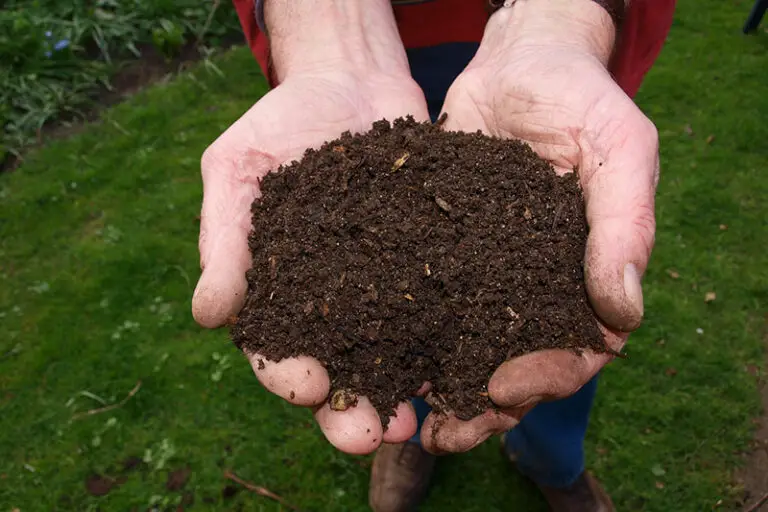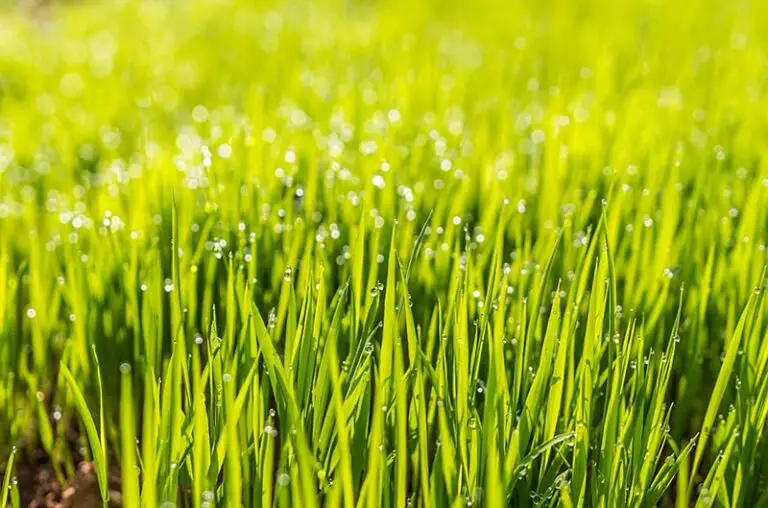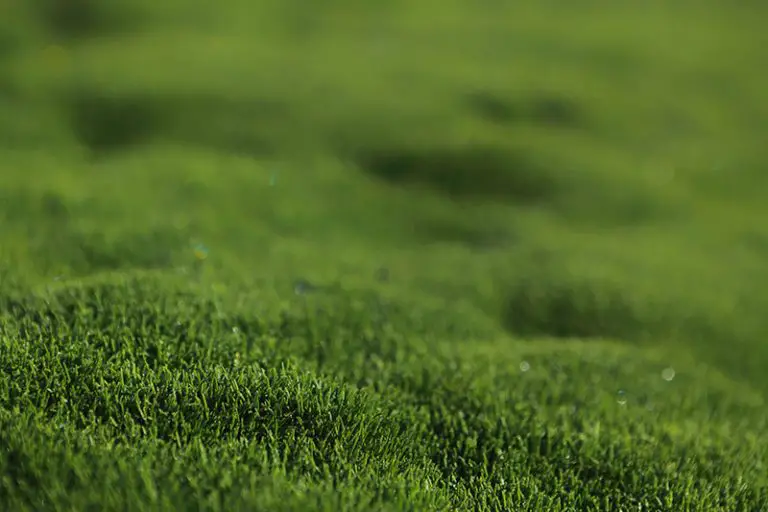Fertilizing Wet Grass: What You Need to Know
When fertilizing your lawn, you can gather the right equipment, pick the perfect fertilizer, and wait for the ideal time to apply. However, the one condition you can’t control is the weather. If the forecast has turned against you, you may be wondering whether it’s okay to apply fertilizer to wet grass before or after a rain.
Depending on the degree of dampness, you can apply fertilizer to wet grass. If the grass is damp, applying fertilizer to wet grass will most likely be safe and may even improve the performance of the fertilizer. If the turf is saturated, waterlogged, or has standing water, you should not fertilize wet grass; this increases the likelihood of the associated risks with fertilizing wet grass, such as accidental overfertilization and fertilizer runoff.
Can I Apply Fertilizer to Wet Grass?
You can apply fertilizer to wet grass in certain circumstances.
Firstly, it’s important to note the level of dampness in your lawn. You can fertilize wet grass as long as the grass is only damp, rather than the turf being waterlogged or saturated. Secondly, the type of fertilizer will also affect the outcome of fertilizing wet grass. The best type of fertilizer to use is a slow-release organic or liquid fertilizer, whereas you should avoid granular or fast-release formulas.
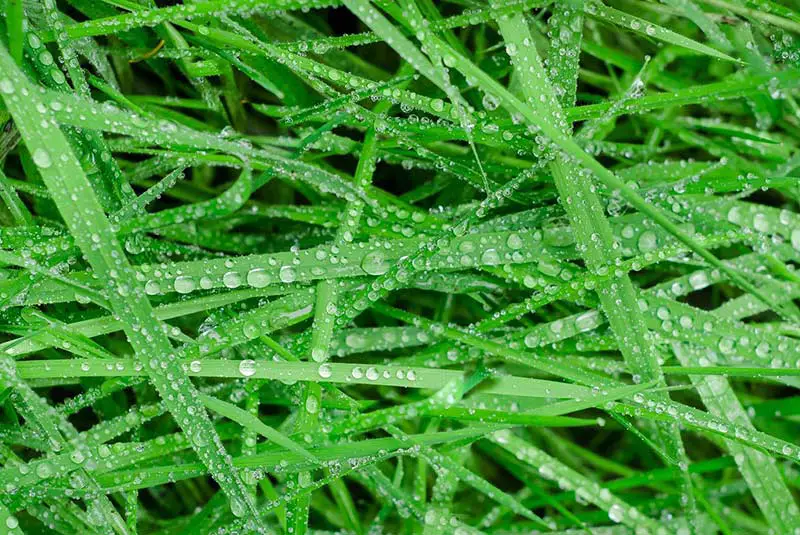
What Happens if You Apply Fertilizer to Wet Grass?
If you apply fertilizer to wet grass that’s only damp, the fertilizer will be just as effective as it would be on dry grass. Damp grass has little effect on the potency of any applied fertilizer.
However, fertilizing wet grass that’s at the point of being waterlogged or having standing water will dilute the product; the fertilizer can lose 60% or more of its potency. You’re also more likely to trigger one of the related risks that come with fertilizing wet grass, as we explain below.
What Are the Risks of Fertilizing Wet Grass?
The risks associated with fertilizing wet grass include nutrient loss, uneven fertilizer distribution, overfertilization, and pollution of the local environment.
1. Losing Nutrients to Runoff
Fertilizing wet grass may just end up being a waste of your time and money. Fertilizers are mobile substances, meaning they can be moved by water and strong winds. After heavy irrigation or rainfall, excess water will drain off and away from your lawn; any nutrients you attempt to add to wet grass will likely be lost to this runoff.
2. Uneven Distribution of Fertilizer
When fertilizing your grass, it’s crucial to distribute the fertilizer evenly across the lawn surface. And, as we’ve just mentioned, fertilizers are mobile substances. Any water on your lawn before or after application may carry the fertilizer away from where you originally applied it. This will cause an uneven distribution of fertilizer.
Some parts of the lawn may end up with no fertilizer, while others will have too much. An uneven distribution of fertilizer can cause grass discoloration, i,e. bright green, yellow, or brown grass; this type of discoloration appears in patches or streaks on the lawn.
3. Overfertilization and Fertilizer Burn
A mistake that many homeowners make after fertilizing wet grass is to reapply the fertilizer, assuming it was washed away. This is likely to lead to overfertilization from adding too much fertilizer in too short of a time. Even if you tested your soil to determine its nutrient content, it’s likely you’ll take an inaccurate reading; this could happen due to an uneven distribution of the fertilizer.
When you overfertilize your lawn, it causes an excessive buildup of the nutrients, chemicals, and salts that the fertilizer contains. This leads to fertilizer burn, a condition which can turn grass yellow or brown, killing the turf in severe cases. Again, this discoloration can appear in patches or streaks on the lawn.
4. Pollution of Nearby Environment and Water Bodies
Another consequence of fertilizer runoff is the potential pollution of the nearby environment. When water drains away from your lawn, it eventually ends up in rivers, streams, and other nearby bodies of water. This carries chemicals and nutrients from your fertilizer into the environment.
The substances in fertilizers are toxic to wildlife, particularly fish and other aquatic organisms. Fertilizer can also cause excessive algal blooms in ponds and lakes, which causes pollution in these water bodies. Because of these potential consequences, fertilizing wet grass may end up being a harmful act against the environment.
Can You Fertilize Wet Grass While it’s Raining?
In theory, you could fertilize wet grass while it’s raining. This is providing that you have a good applicator that will be unaffected by rain and that the rainfall is very light. In these conditions, there shouldn’t be too much of an adverse effect from fertilizing while it’s raining.
With that said, it’s better to wait to fertilize before or after the rain. This will allow you to inspect the dampness of the soil and grass before adding the fertilizer. You can safely apply fertilizer to wet grass as long as the lawn isn’t too wet; it’s hard to properly ascertain the dampness of your lawn when it’s actively raining.
Fertilizing Wet Grass After Rain or Irrigation
1. Fertilizing Damp Grass After a Light Rain or Regular Irrigation
After a light rain or a regular watering session, your grass should only be damp. Damp grass will have droplets of water on the blades, and the underlying soil shouldn’t be muddy at all. If you have sandy soil, the underlying soil may even feel dry due to this soil’s well-draining properties. This level of dampness is the ideal condition when applying fertilizer to wet grass.
2. Fertilizing Wet Grass After a Heavy Rain or Deep Irrigation
1 to 3 hours of steady rain is the rough equivalent of watering your lawn for 20 to 30 minutes with a hose or sprinkler system. For many granular fertilizers, it’s necessary to water the lawn for this amount of time before or after application; a few hours of rainfall will do this job for you.
You should wait an hour or two after the rainfall stops for the water to settle in the soil. Once it does, there should be no puddling or standing water, and the grass shouldn’t shift if you apply firm pressure with your foot. Under these conditions, it’s safe to fertilize wet grass with any standard liquid or granular fertilizer. Avoid adding more water if using a liquid fertilizer formula; granular fertilizer, on the other hand, will require a very brief watering to help the product set.
3. Fertilizing Waterlogged or Flooded Grass
Waterlogged or flooded grass will have standing water pooling from the base to the tips of the grass blades. When your lawn is in this condition, you should absolutely avoid fertilizing wet grass with both granular or liquid fertilizer.
If your grass is waterlogged, the risk of seeing adverse effects from any applied fertilizer is much higher. It’s impossible for waterlogged grass to properly absorb amendments; the product will simply run off the soil and leech into the nearby environment. You’ll need to wait until the lawn dries out, including both the grass blades and the underlying turf.
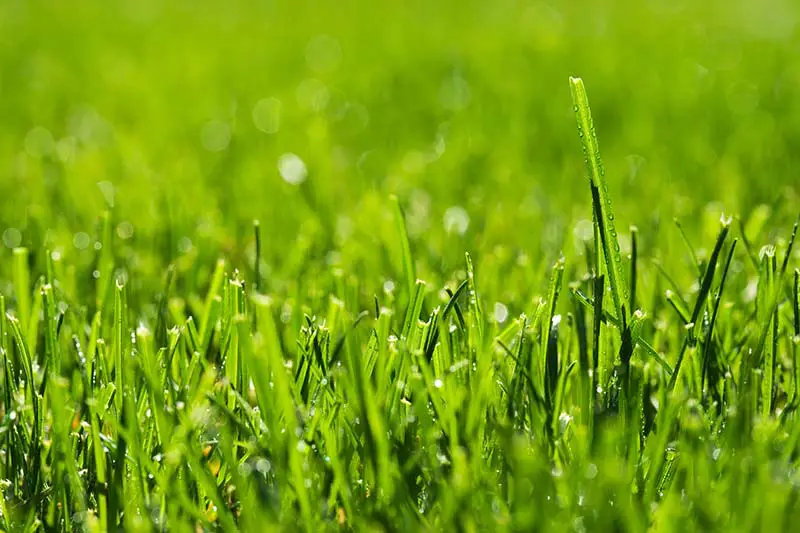
How Different Fertilizers Perform on Wet Grass
1. Using Quick-Release Fertilizers on Wet Grass
Quick-release fertilizers are formulated to be in a format readily taken up by plants, working fast to release their nutrients. These fertilizers are great if you want to see fast results from your product; however, they’re not the best option when it comes to fertilizing wet grass.
The wet grass will absorb the nutrients from quick-release fertilizer too quickly. This will cause pigmentation and discoloration in the grass, appearing similar to the symptoms of fungal disease. It’s therefore best to avoid using any fertilizer labeled as quick-release or fast-release on wet grass.
2. Using Slow-Release Fertilizers on Wet Grass
Slow-release or controlled-release fertilizers come in a format that slows the release of the product’s nutrients. These fertilizers have a thick coating made from resin, sulfur, and organic polymers that prevents the fertilizer from releasing its nutrients immediately after application. It takes several weeks for the fertilizer to break down, as water, sunlight, and other agents of degradation take effect.
Slow-release fertilizers can also have adverse effects on wet grass. This type of fertilizer can cause discoloration in the grass too; however, as this fertilizer takes a longer time to work, you won’t see the discoloration until several weeks later.
3. Using Granular Fertilizers on Wet Grass
Granular fertilizers are dry products that typically come in pelleted form. Most granular fertilizers are slow-release, however, you can also buy quick-release products. It’s typically advised to apply granular fertilizer to dry grass for best results.
Improper application of granular fertilizers can cause fertilizer burn on grass. The risk of turf damage is higher with fast-release granular formulas; these products are highly likely to lead to fertilizer burn if you use them on wet grass. The same goes if you water the lawn or there’s heavy rainfall after application. For this reason, you should wait until any moisture from irrigation, rainfall, fog, or dew dries up before applying granular fertilizer to your lawn.
4. Using Liquid Fertilizers on Wet Grass
Liquid fertilizers are nutrients in a water-soluble format that absorb into soil upon application. These fertilizers work their way to the grass’ roots for the grass plants to begin taking them up immediately. You can safely apply liquid fertilizers to wet grass, providing it’s only slightly damp.
While it’s safe to apply liquid fertilizer to damp grass, avoid using it on grass after a heavy downpour. This could cause the fertilizer to leech off your lawn before your grass plants get the chance to absorb it.
5. Using Organic Fertilizers on Wet Grass
Organic fertilizers are products made from entirely natural materials. Common substances used in organic fertilizers include animal manure, dried and powdered blood meal, bone meal, crushed shells, finely ground fish, phosphate rock, and wood. In general, these are the best type of fertilizers you can use on your lawn; they also perform well on wet grass.
Organic fertilizers release their nutrients gradually as the organic matter within the fertilizer decomposes. In addition to providing nutrients, organic fertilizers also promote the presence of microorganisms like worms and microbes in the soil. It’s generally safe to use organic fertilizers to fertilize wet grass as they aren’t very mobile and contain a low concentration of nutrients.
When Not to Fertilize Wet Grass
If you have hydrophobic soil, under no circumstances should you fertilize the grass before or after rain. Hydrophobic soil is that which repels water; after irrigation or rainfall, the water will run off the soil surface instead of absorbing into the ground. If you fertilize wet grass growing in hydrophobic soil, the entirety of your product will drain off with the water.
Hydrophobic soil occurs as a result of a soil compaction, a lack of humus, clay-heavy soil, or prolonged periods of drought and heat. You must correct whatever issue is causing your soil to be hydrophobic before fertilizing it. If your soil is compact, you can correct this issue by aerating the lawn; this is also a way to improve clay-heavy soil. To add humus to your lawn, apply a top dressing of compost or another type of organic matter to the soil. Adjust your schedule for watering during the summer to counteract the effects of drought.

